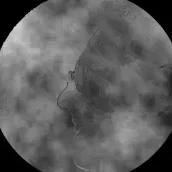-
Posts
9,963 -
Joined
-
Last visited
Everything posted by NotMyFault
-
Users of Affinity apps would like to get an official statement if Affinity is able to implement a workaround avoiding to trigger a bug, and when this happens. The lack of information from Affinity leads users to the conclusion that Affinity doesn’t care and simply waits for NVIDIA to fix the driver bug. This happened before when latest AMD drivers had a performance issue, Affinity just disabled HW acceleration completely.
-
Can you upload the afdesign file, and a screenshot of printer settings. please make more tests: export as raster/bitmap format, and print that bitmap file. export as PDF, print PDF from Affinity and from OS (PDF viewing app).
- 26 replies
-
- affinity designer
- printing
-
(and 1 more)
Tagged with:
-
https://affinity.help/designer2/en-US.lproj/pages/ObjectControl/layerStates.html
-
I see the issue. Carefully review the video, at 0:40 when you try to move the origin point, Affinity mistakes this as selection gesture, as the touch point is in the middle between 2 curves. Consequently, all layers get deselected, this is what seemingly vanish the origin point. I rate this as bug, too, and suffered multiple times. it can only be avoided by zooming in, but this is often impractical when you need to be more zoomed out to be able to see or reach other parts of the objects like bounding box nodes.
-

Why is this empty file over 100 MB in size?
NotMyFault replied to wsilmenau's topic in V2 Bugs found on Windows
The file is 70k x 9k pixel size. A single bitmap layer in full size would require 640.000.000x5 or 320 Mbyte (uncompressed) -

Why is this empty file over 100 MB in size?
NotMyFault replied to wsilmenau's topic in V2 Bugs found on Windows
If you edit a file, then deleted all layers, it will still contain lots of data unless you use „save as“. There is no „garbage collection“ when you delete layers. Similar to a file system, deleted blocks are only marked as deleted in metadata, but still contain the old data. -

Affinity apps hard locking / kernel panicking Mac
NotMyFault replied to mattspace's topic in V2 Bugs found on macOS
What exactly do you mean by context change? Switching apps, or doing something specific in Affinity apps? -

Blind effect anywhere?
NotMyFault replied to CaroleA's topic in Desktop Questions (macOS and Windows)
For the edges, you can use a custom made vector image brush in Designer, or some layer fx.. This allows to use a simple gradient for the fill of the shape. -
Please activate „show touches“ in settings. next, include the layer panel in recording (open it when issue happens) the most likely cause is touching the canvas (maybe unintentionally), thus the layer gets deselected.
-

Blind effect anywhere?
NotMyFault replied to CaroleA's topic in Desktop Questions (macOS and Windows)
Or save one 256x256 px grey gradient as png. Then create fill layer or shape as needed, use fill, set to bitmap, allows repeated patterns similar to pattern layer. -

Blind effect anywhere?
NotMyFault replied to CaroleA's topic in Desktop Questions (macOS and Windows)
A procedural texture filter creates this, can be saves as preset. if interested I will look up the formulas. -

Affinity apps hard locking / kernel panicking Mac
NotMyFault replied to mattspace's topic in V2 Bugs found on macOS
I‘m affected with 2 M1 devices and mildly unhappy, too. Switched from Windows to leave some Windows specific bugs behind only to find more (severe) bugs on Mac side. -

Affinity apps hard locking / kernel panicking Mac
NotMyFault replied to mattspace's topic in V2 Bugs found on macOS
Nothing will happen. NathanC already gave and official answer. Affinity will only (try to) fix bugs which are at least reproducible on PC types already in possession of the Affinity team, and affect many users. There are many more CPU/GPU types which don’t harmonize with HW acceleration, and will never get fixed. We have currently multiple long lasting rendering bugs Designer on M1 Mac (zoom level rendering bugs) all M1 based iPads (navigator thumbnail shows artifacts) last gen NVIDIA 59xx (crashes) in some cases Affinity states it is a driver issue, one affected AMD high end GPUs and lasted for more than a year, Affinity even disabled HW acceleration on their side when detecting such GPU. -

Affinity apps hard locking / kernel panicking Mac
NotMyFault replied to mattspace's topic in V2 Bugs found on macOS
There are far less relevant in Publisher. Performance options differ between Apps. Normally you will to the heavy lifting in Photo, export as bitmap file, and import in Publisher, sparing Publisher from the GPU relevant workloads. Text are mostly vectors, and scaling bitmap images (without heavy filters) can be done on CPU. -

Affinity apps hard locking / kernel panicking Mac
NotMyFault replied to mattspace's topic in V2 Bugs found on macOS
The PT filter is quite slow on my PCs.



